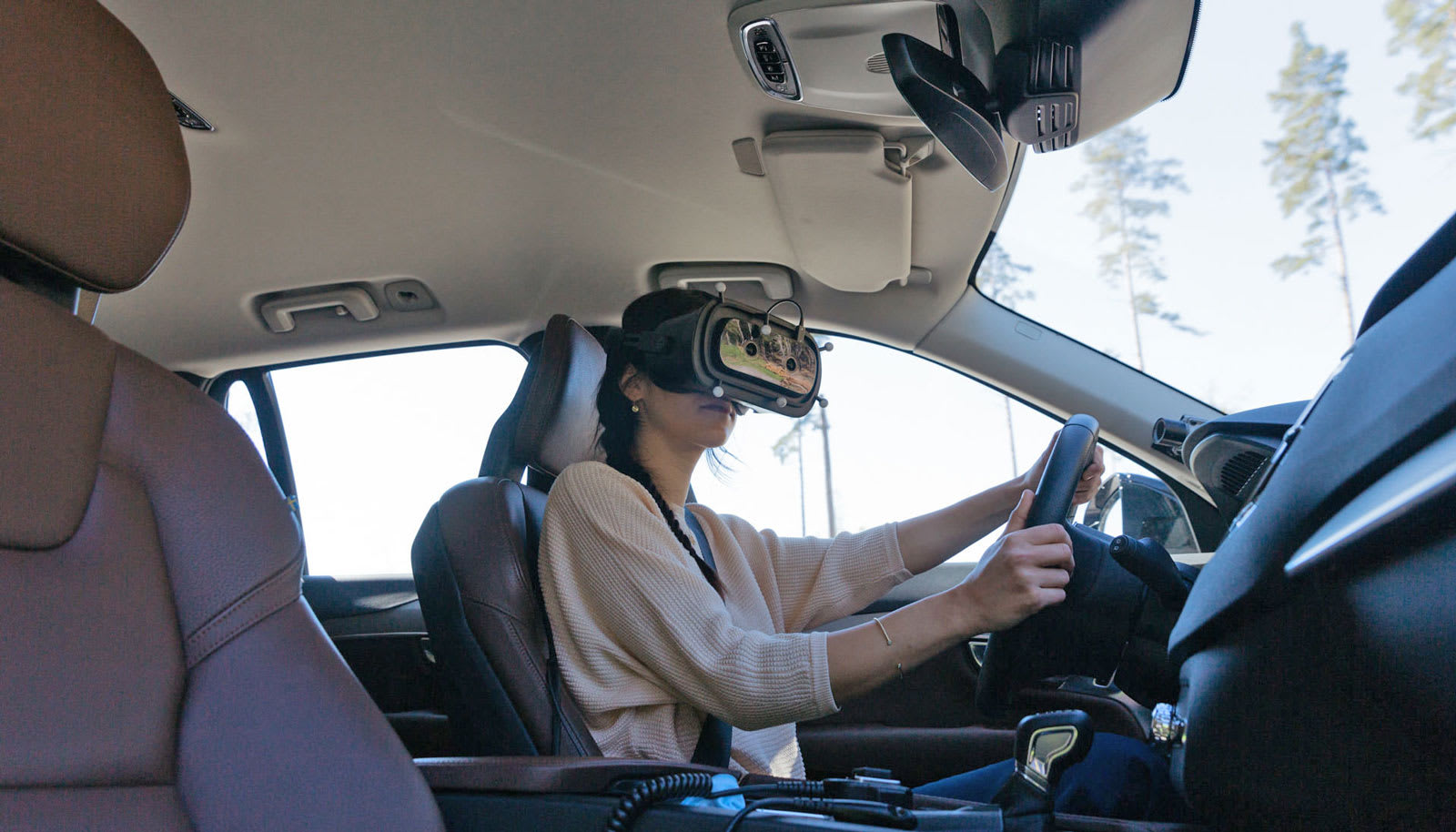
I'm sitting in a Volvo XC60 in Italy when a moose appears from out of a doorway. Except that none of this is real. I'm actually sat in an office chair in a San Francisco office building, wearing Varjo's XR-1 mixed-reality headset. It's a ridiculous scenario, but both virtual reality and augmented reality are adding a new twist on the car design process.
Unlike the Hololens or Magic Leap headsets, the XR-1 is completely enclosed like a VR system. On the front are two cameras that deliver the outside world in near real-time to the wearer. Varjo says that it's reduced the latency until it's almost imperceptible. I keep clapping my hands and moving my head around to test their theory. It's not a good look. Still, the system checks out and I sit down in my virtual Volvo that has appeared in the office.
With typical mixed reality and AR systems, the virtual items are never truly opaque. You're not looking at things, but apparitions of things. Throw in the small field of vision and it's like trying to see an augmented world through a monocle held three inches from your eye.
Varjo's idea to essentially show you everything including the real world in a VR headset allows the company to project items that almost seamlessly fit into reality. The result: A solid-looking Volvo SUV placed in an Italian scene with a moose.
The technology piqued Volvo's interest and the companies have been working together for about a year. The automaker will use the technology to help it iterate on designs. Frankly, nearly every automaker will tell you that it's already using VR and AR in the design process. What's new is that Volvo has been using this system while driving to test out heads-up displays, new interiors, warning systems for people and moose, as well as a host of other in-car features.
Since that XR-1's two 12-megapixel cameras can deliver the real and virtual world at very low latency (less than 15 milliseconds), Volvo is able to work on ideas while behind the wheel. Not on the road with other drivers, but on closed sections of road and on the track.
In those controlled conditions Volvo can not only try out new features with its engineers, but also with the public. The headset and its virtual elements can be tied into the car itself. So what happens in the virtual world, as far as the vehicle is concerned, is happening in real life. Volvo can then create scenarios to track responses. For example, the automaker can track a driver's body and eye movements when a virtual pedestrian runs out onto the road.
"Instead of the usual static way of evaluating new products and ideas, we can test concepts on the road immediately. This approach offers considerable potential cost savings by clearing bottlenecks much earlier in the design and development process," said Henrik Green, CTO of Volvo Cars.
Volvo likes the tech so much, its Volvo Cars Tech Fund has invested in Varjo. It's a smart move -- the automotive world has undergone a revolution in the past few years. Companies are moving much quicker to keep up with the latest technology like electrification, advanced driver's assistance, and ever-evolving infotainment systems. If a company isn't looking at ways to speed up design and enhance safety, it's falling behind. Volvo wants to move fast while keeping drivers, pedestrians, and Italian moose safe. Sometimes, innovation apparently requires someone to drive around with a computer strapped to their face or at the very least, sit in a virtual SUV on the eighth floor of a San Francisco office building.
via engadget.com





0 Response to "Volvo designers are driving around in mixed-reality headsets"
Post a Comment